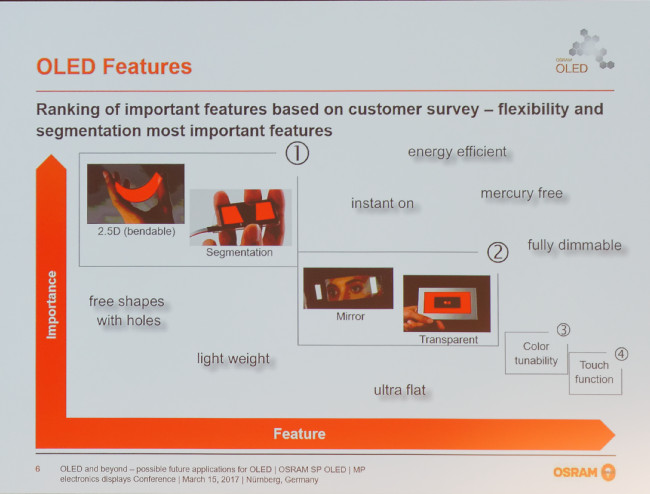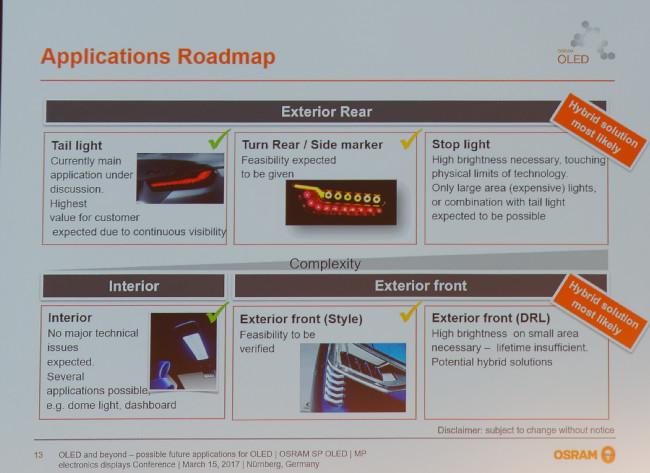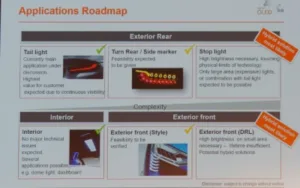 Dr Mark Philippens is from Osram OLED and he talked about non-display applications for OLED. He started by looking at the differences between OLED displays and lighting. His talk was mainly on OLED for lighting, where the main reason for choosing OLEDs for lighting is for the flexibility in design. The automotive industry is keen on OLED but one of the challenges is cost, especially for lighting because there is a tough competitor, LED. However LED is a point source and needs to be diffused to create an area light. OLED does not need this diffusion.
Dr Mark Philippens is from Osram OLED and he talked about non-display applications for OLED. He started by looking at the differences between OLED displays and lighting. His talk was mainly on OLED for lighting, where the main reason for choosing OLEDs for lighting is for the flexibility in design. The automotive industry is keen on OLED but one of the challenges is cost, especially for lighting because there is a tough competitor, LED. However LED is a point source and needs to be diffused to create an area light. OLED does not need this diffusion.
 Osram showed that buyers like these OLED features
Osram showed that buyers like these OLED features
OLEDs have a number of interesting features such as free shapes, with holes and both mirror and transparent displays are possible, which is interesting for automotive applications. OLEDs may even, one day, develop into windows and window replacements. Segmentation is a useful feature for OLEDs, so animations can be made, for example to use different shapes to signal different modes when used on the outside of cars. Flexibility is also an attractive feature, as are the thinness and light weight. Reliability is still a challenge and temperature conditions are tough. At the moment, there are limits on the bending radii. Engineering challenges exist in mechanics and connections.
A German project with Audi, Hell and Osram created a flexible OLED tail light for automotive applications that showed new shapes and features.
Osram has created mockups using OLEDs combined with LEDs. OLEDs had limitations for brightness so LEDs were also included. Last year, OLEDs came into volume production with BMW M4GTS and Audi TT RS which both had OLED taillights in 2016. Taillights have the highest visibility, so this means extra value for the customer. Using OLEDs inside the car is something makers would like to do, but the extra cost is an issue and the use of an OLED is not visible to other road users. Front lighting is difficult and will probably be hybrid with LED and OLED because of the level of brightness needed.
 Osram sees a number of OLED applications on the automotive roadmap
Osram sees a number of OLED applications on the automotive roadmap
Reliability is critical and there are real challenges in temperature and light exposure. Philippens then compared automotive with general lighting. Operation lifetime is a challenge as are storage, temparatures and the electro optics.
In summary, design is a key driver. Segmentation and flexibility are differentiators. Challenges are robustness and reliability, but automotive will be a stepping stone to general lighting applications.

